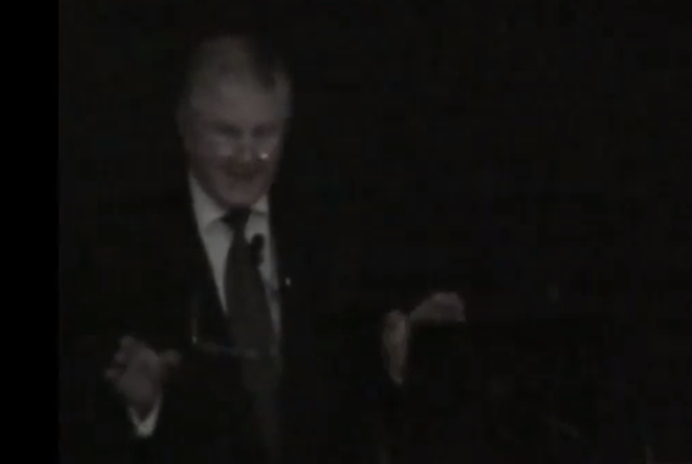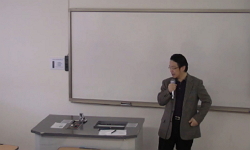In this ethnographic sketch, I analyze the complex processes of Sino-Islamic identity formation by examining the variety and diversity of locally produced “authenticity,” situated within a global understanding of Islam. Even within a single provin...
http://chineseinput.net/에서 pinyin(병음)방식으로 중국어를 변환할 수 있습니다.
변환된 중국어를 복사하여 사용하시면 됩니다.
- 中文 을 입력하시려면 zhongwen을 입력하시고 space를누르시면됩니다.
- 北京 을 입력하시려면 beijing을 입력하시고 space를 누르시면 됩니다.
https://www.riss.kr/link?id=A103808981
-
저자
Lesley Turnbull (New York University)
- 발행기관
- 학술지명
- 권호사항
-
발행연도
2014
-
작성언어
English
- 주제어
-
자료형태
학술저널
-
수록면
35-67(33쪽)
-
KCI 피인용횟수
0
- 제공처
-
0
상세조회 -
0
다운로드
부가정보
다국어 초록 (Multilingual Abstract)
In this ethnographic sketch, I analyze the complex processes of Sino-Islamic identity formation by examining the variety and diversity of locally produced “authenticity,” situated within a global understanding of Islam. Even within a single province, among a single official minzu (nationality) that People’s Republic of China propaganda, media, and scholarship often construct as a unified, static group, localized practices and processes of identity formation are remarkably diverse. This article investigates how trans/national discourses and practices of Islamic authenticity are localized within two specific field sites: the provincial capital of Kunming and the rural Muslim enclave of Shadian. For the purposes of this article, I focus primarily on how life is temporally and spatially structured, both in everyday practice and in imaginings of one’s place in history, modernity, the Muslim world, and the Chinese state. By setting out details of the daily lives of two Hui Muslim women, I aim to elucidate how temporal and spatial structures of life, which are tied to urban or rural location, reflect and shape local identity formation. I argue that as actors involved in their own self-production, Hui Muslims in Kunming and Shadian negotiated, appropriated, and contested both monolithic notions of Islam and the official statepropagated minzu classificatory system, producing their own versions of authentic Hui Muslim identities. What constituted authentic Hui Muslim identity depended to a great extent on the residence of the individual.
참고문헌 (Reference)
1 Fei, X, "Zhonghua min zu duo yuan yi ti ge ju [The diversity in unity of the Chinese nation]" Zhong yang min zu xue yuan chubanshe 1989
2 Lin Yaohua, "Yunnan shaoshu minzu shehui lishi diaocha [Collected materials of sociohistorical investigations of minority nationalities in Yunnan]" Yunnan renmin chubanshe 1-6, 1987
3 Yang Zhaojun, "Yunnan Huizu shi [A history of the Hui in Yunnan]" Minzu chubanshe 1994
4 Tapp, Nicholas, "Yunnan : Ethnicity and Economies—Markets and Mobility" 11 (11): 97-110, 2010
5 Bai Chongren, "Yisilan Wenhua Shi Huizu Wenhua de Neike [Islam is the internal nucleus of the Hui’s culture]" 16 (16): 4-8, 1994
6 Jaschok, Maria, "Women, Religion, and Space in China: Islamic Mosques and Daoist Temples, Catholic Convents and Chinese Virgins" Routledge 2012
7 Caffrey, Kevin, "Who Who Is, and Other Local Poetics of National Policy: Yunnan Minzu Shibie and Hui in the Process" 18 (18): 243-274, 2004
8 Evans, Grant, "Where China Meets Southeast Asia: Social and Cultural Change in the Border Regions" St. Martin’s Press 2000
9 Harrell, Stevan, "Ways of Being Ethnic in Southwest China" University of Washington Press 2001
10 Fan, Ke, "Ups and Downs: Local Muslim History in South China" 23 (23): 63-87, 2003
1 Fei, X, "Zhonghua min zu duo yuan yi ti ge ju [The diversity in unity of the Chinese nation]" Zhong yang min zu xue yuan chubanshe 1989
2 Lin Yaohua, "Yunnan shaoshu minzu shehui lishi diaocha [Collected materials of sociohistorical investigations of minority nationalities in Yunnan]" Yunnan renmin chubanshe 1-6, 1987
3 Yang Zhaojun, "Yunnan Huizu shi [A history of the Hui in Yunnan]" Minzu chubanshe 1994
4 Tapp, Nicholas, "Yunnan : Ethnicity and Economies—Markets and Mobility" 11 (11): 97-110, 2010
5 Bai Chongren, "Yisilan Wenhua Shi Huizu Wenhua de Neike [Islam is the internal nucleus of the Hui’s culture]" 16 (16): 4-8, 1994
6 Jaschok, Maria, "Women, Religion, and Space in China: Islamic Mosques and Daoist Temples, Catholic Convents and Chinese Virgins" Routledge 2012
7 Caffrey, Kevin, "Who Who Is, and Other Local Poetics of National Policy: Yunnan Minzu Shibie and Hui in the Process" 18 (18): 243-274, 2004
8 Evans, Grant, "Where China Meets Southeast Asia: Social and Cultural Change in the Border Regions" St. Martin’s Press 2000
9 Harrell, Stevan, "Ways of Being Ethnic in Southwest China" University of Washington Press 2001
10 Fan, Ke, "Ups and Downs: Local Muslim History in South China" 23 (23): 63-87, 2003
11 Fei, X, "Toward a People’s Anthropology" New World Press 1981
12 Xu, Xinjian, "Tourism, Anthropology and China" White Lotus 193-214, 2001
13 Bello, David, "To Go Where No Han Could Go for Long: Malaria and the Qing Construction of Ethnic Administrative Space in Frontier Yunnan" 31 (31): 283-317, 2005
14 Forbes, Andrew D. W., "The ‘Čin-Hō’(Yunnanese Chinese)Muslims of North Thailand" 7 (7): 173-186, 1986
15 Forbes, Andrew D. W., "The ‘Panthay’(Yunnanese Chinese)Muslims of Burma" 7 (7): 384-394, 1986
16 Hillman, Ben, "The Rise of the Community in Rural China: Village Politics, Cultural Identity and Religious Revival in a Hui Hamlet" 51 : 53-73, 2004
17 Ma, Haiyun, "The Mythology of Prophet’s Ambassadors in China: Histories of Sa’d Waqqas and Gess in Chinese Sources" 26 (26): 445-452, 2006
18 Pan Jiao, "The Maintenance of the LoLo Caste Idea in Socialist China" 2 (2): 108-127, 1997
19 Carrico, Kevin Joseph, "The Imaginary Institution of China: Dialectics of Fantasy and Failure in Nationalist Identification, as Seen through China’s Han Clothing Movement" Cornell University 2013
20 Tapp, Nicholas, "The Hmong of China : Context, Agency, and the Imaginary" Brill 2003
21 Jaschok, Maria, "The History of Women’s Mosques in Chinese Islam: A Mosque of Their Own" Curzon Press 2000
22 Forbes, Andrew D. W., "The Haw: Traders of the Golden Triangle" Asia Film House 1997
23 Bai, Zhihong, "The Ethnic Identification of the Zang-Hui or Tibetan-Hui in Tibet-Yi Corridor and Their Subjectivity: An Example of the Zang-Hui of Shangri-La County" 4 : 58-65, 2008
24 Pigg, Stacy Leigh, "The Credible and the Credulous: The Question of ‘Villagers’ Beliefs’in Nepal" 11 (11): 160-201, 1996
25 Sautman, Barry, "The Construction of Racial Identities in China and Japan: Historical and Contemporary Perspectives" Hurst and Company 75-95, 1997
26 Skinner, G. William, "The City in Late Imperial China" SMC Publishing 1995
27 Atwill, David G., "The Chinese Sultanate: Islam, Ethnicity, and the Panthay Rebellion in Southwest China" Stanford University Press 1856-1873, 2005
28 Scott, James C., "The Art of Not Being Governed: An Anarchist History of Upland Southeast Asia" Yale University Press 2009
29 Davis, Sara, "Song and Silence : Ethnic Revival on China’s Southwest Borders" Columbia University Press 2005
30 Allès, Elisabeth, "Some Joking Relationships between Hui and Han Villages in Henan" 49 : 49-60, 2003
31 Ma Shaomei, "Shadian Huizu Shiliao [Historical records of the Shadian Hui]" Kaiyuan Yinshuachang 46-57, 1989
32 Armijo-Hussein, Jacqueline M., "Sayyid ’Ajall Shams Al-Din: A Muslim from Central Asia, Serving the Mongols in China, and Bringing Civilization to Yunnan" Harvard University 1997
33 Boum, Aomar, "Saharan Jewry : History, Memory and Imagined Identity" 16 (16): 325-341, 2011
34 Jacka, Tamara, "Rural Women in Urban China: Gender, Migration, and Social Change" M.E. Sharpe 2005
35 Fiskesjö, Magnus, "Rescuing the Empire: Chinese Nation-Building in the Twentieth Century" 5 (5): 15-44, 2006
36 Zhang, Wen, "Regional and Ethnic Prejudice: A Cultural Interpretation of ‘Miasma’(zhangqi (瘴气) and ‘Miasma Disease’ (zhangbing 瘴病) in Traditional China" 3 : 68-77, 2005
37 Blum, Susan, "Portraits of Primitives: Ordering Human Kinds in the Chinese Nation" Rowman and Littlefield 2001
38 Mahmood, Saba, "Politics of Piety: The Islamic Revival and the Feminist Subject" Princeton University Press 2005
39 Bourdieu, Pierre, "Pascalian Meditations" Stanford University Press 2000
40 Litzinger, Ralph, "Other Chinas: The Yao and the Politics of National Belonging" Duke University Press 2000
41 Limbert, Mandana E., "Of Ties and Time: Sociality, Gender and Modernity in an Omani Town" University of Michigan 2002
42 Kipnis, Andrew, "Neoliberalism Reified: Suzhi Discourse and Tropes of Neoliberalism in the People’s Republic of China" 13 (13): 383-400, 2007
43 Armijo, Jacqueline, "Narratives Engendering Survival : How the Muslims of Southwest China Remember the Massacres of 1873" 2 : 293-332, 2001
44 Allès, Elisabeth, "Musulmans de Chine: Une anthropologie des Hui du Henan [Muslims of China: An anthropology of the Hui of Henan]" Éd. de l’École des Hautes Études en Sciences Sociales 2000
45 Gladney, Dru C., "Muslim Chinese: Ethnic Nationalism in the People’s Republic" Harvard University 1996
46 Gao, Fayuan, "Musheng Houyi [Descendants of the Prophet Muhammad]" Yunnan University Press 2000
47 Tʻien, Ju-kʻang, "Moslem Rebellion in China: A Yunnan Controversy" Australian National University 1981
48 Appadurai, Arjun, "Modernity at Large: Cultural Dimensions of Globalization" University of Minnesota Press 1996
49 Skinner, G. William, "Mobility Strategies in Late Imperial China : A Regional Systems Analysis" 1 : 327-364, 1976
50 Schein, Louisa, "Minority Rules: The Miao and the Feminine in China’s Cultural Politics" Duke University Press 2000
51 Hill, Ann Maxwell, "Merchants and Migrants: Ethnicity and Trade among Yunnanese Chinese in Southeast Asia" Yale University Southeast Asia Studies 1998
52 Williams, Raymond, "Marxism and Literature" Oxford University Press 1977
53 Hansen, Mette Halskov, "Lessons in Being Chinese: Minority Education and Ethnic Identity in Southwest China" University of Washington Press 1999
54 Ma, Ping, "Les Massacres de La Révolution Culturelle [The massacres of the Cultural Revolution]" Buchet-Chastel 409-417, 2008
55 Zhu Yong, "Kunming: Zuihou de Shuncheng Jie [Kunming: The last Shuncheng Jie]"
56 Israeli, Raphael, "Islam in China: Religion, Ethnicity, Culture, and Politics" Lexington Books 2002
57 Michaud, Jean, "Incidental” Ethnographers : French Catholic Missions on the Tonkin-Yunnan Frontier, 1880–1930" Brill 1930
58 Zhang, Li, "In Search of Paradise: Middle-Class Living in a Chinese Metropolis" Cornell University Press 2010
59 Tapp, Nicholas, "In Defence of the Archaic : A Reconsideration of the 1950s Ethnic Classification Project in China" 3 (3): 63-84, 2002
60 Anderson, Benedict, "Imagined Communities: Reflections on the Origin and Spread of Nationalism" Verso 2006
61 Bai Shouyi, "Huimin Qiyi [Hui rebellions]" Shenzhou guo guang she 1953
62 Siu, Helen F., "Grounding Displacement : Uncivil Urban Spaces in Post-Reform South China" 34 (34): 329-350, 2007
63 Wang, Jianping, "Glossary of Chinese Islamic Terms" Curzon Press 2001
64 Dirlik, Arif, "Global Modernity? Modernity in an Age of Global Capitalism" 6 (6): 275-292, 2003
65 Hebdige, Dick, "Fax to the Future" 20 (20): 18-23, 1990
66 Hill, Ann Maxwell, "Familiar Strangers: The Yunnanese Chinese in Northern Thailand" University of Illinois at Urbana-Champaign 1982
67 Lipman, Jonathan Neaman, "Familiar Strangers: A History of Muslims in Northwest China" University of Washington Press 1997
68 Gladney, Dru C., "Ethnic Identity in China: The Making of a Muslim Minority Nationality. Fort Worth" Harcourt Brace College Publishers 1998
69 Fan, Ke, "Ethnic Configuration and State-Making: A Fujian Case" 46 (46): 919-945, 2012
70 Mullaney, Thomas S., "Ethnic Classification Writ Large: The 1954 Yunnan Province Ethnic Classification Project and Its Foundations in Republican-Era Taxonomic Thought" 18 (18): 207-241, 2004
71 Gladney, Dru C., "Dislocating China: Reflections on Muslims, Minorities, and Other Subaltern Subjects" University of Chicago Press 2004
72 Wang, Jianping, "Discrimination, Corruption and Moral Decline: The Historical Background of the Muslim Hui Uprising in Yunnan, China, 1856–1873, Volume 2"
73 Pan Jiao, "Deconstructing China’s Ethnic Minorities" 42 (42): 46-61, 2010
74 Szerszynski, Bronislaw, "Cultures of Cosmopolitanism" 50 (50): 461-481, 2002
75 Harrell, Stevan, "Cultural Encounters on China’s Ethnic Frontiers" University of Washington Press 1995
76 Mullaney, Thomas S., "Critical Han Studies: The History, Representation, and Identity of China’s Majority" University of California Press 2012
77 Zhang, Li, "Contesting Spatial Modernity in Late-Socialist China" 47 (47): 461-, 2006
78 Wang, Jianping, "Concord and Conflict: The Hui Communities of Yunnan Society" Almqvist and Wiksell 1996
79 Mullaney, Thomas S., "Coming to Terms with the Nation: Ethnic Classification in Modern China" University of California Press 2011
80 Caffrey, Kevin, "China’s Muslim Frontier: Empire, Nation, and Transformation in Yunnan" University of Chicago 2007
81 Hyde, Sandra Teresa, "China Urban: Ethnographies of the Contemporary Culture" Duke University Press 143-162, 2001
82 Sen, Tan Ta, "Cheng Ho and Islam in Southeast Asia" Institute of Southeast Asian Studies 2009
83 Ateljevic, Irena, "CAUTHE 2006: To the City and Beyond" Victoria University. School of Hospitality, Tourism, and Marketing 1249-1251, 1251
84 Yang, Bin, "Between Winds and Clouds: The Making of Yunnan (Second Century BCE to Twentieth Century CE)" Columbia University Press 2008
85 Gillette, Maris Boyd, "Between Mecca and Beijing : Modernization and Consumption among Urban Chinese Muslims" Stanford University Press 2000
86 Forbes, Andrew D. W., "Asian Merchants and Businessmen in the Indian Ocean and the China Sea" Oxford University Press 13-20, 1988
87 Giersch, Charles Patterson, "Asian Borderlands: The Transformation of Qing China’s Yunnan Frontier" Harvard University Press 2006
88 Tatlow, Didi Kirsten, "A Model of Inclusion for Muslim Women" The New York Times
동일학술지(권/호) 다른 논문
-
Defining Shariʿa in China: State, Ahong, and the Postsecular Turn
- 고려대학교 민족문화연구원
- Matthew S. Erie
- 2014
-
The Opposition of a Leading Akhund to Shi’a and Sufi Shaykhs in Mid-Nineteenth- Century China
- 고려대학교 민족문화연구원
- Wang Jianping
- 2014
-
Bringing Class and Indigeneity In, but Leaving Japaneseness Out
- 고려대학교 민족문화연구원
- Robert Moorehead
- 2014
-
China in Islam: Turki Views from the Nineteenth and Twentieth Centuries
- 고려대학교 민족문화연구원
- Rian Thum
- 2014
분석정보
인용정보 인용지수 설명보기
학술지 이력
| 연월일 | 이력구분 | 이력상세 | 등재구분 |
|---|---|---|---|
| 2016-09-01 | 평가 | SCOPUS 등재 (기타) |  |
| 2009-06-18 | 학회명변경 | 영문명 : Institute of Korean Culture -> Research Institute of Korean Studies |
학술지 인용정보
| 기준연도 | WOS-KCI 통합IF(2년) | KCIF(2년) | KCIF(3년) |
|---|---|---|---|
| 2016 | 0.02 | 0.02 | 0.03 |
| KCIF(4년) | KCIF(5년) | 중심성지수(3년) | 즉시성지수 |
| 0.03 | 0.03 | 0.181 | 0 |




 KCI
KCI






